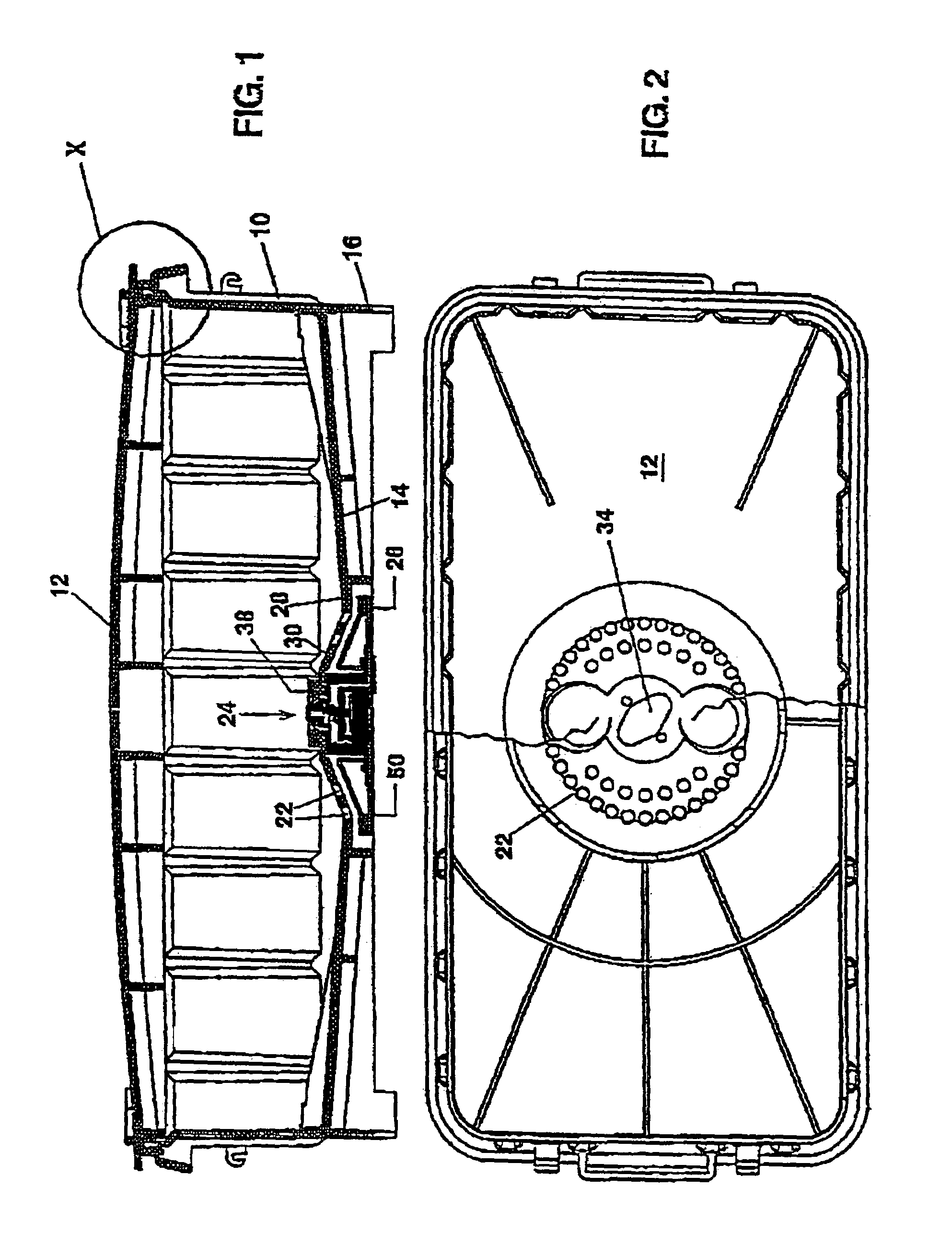Sterilization container
a technology of sterilization container and sterile container, which is applied in the direction of disinfection, chemical/physical/physicochemical processes, chemistry apparatus and processes, etc., can solve the problems of inability to reliably prevent premature closing, possible implosion, and risk of premature closing
- Summary
- Abstract
- Description
- Claims
- Application Information
AI Technical Summary
Benefits of technology
Problems solved by technology
Method used
Image
Examples
Embodiment Construction
[0035]Referring to FIG. 1, the sterilization container consists of the trough 10 and the lid 12. The trough has a sloping bottom 14 and an encircling base frame 16. A sealing ring 18 of L-shaped cross section is arranged between the top rim of the trough 10 and the lid 12 (FIG. 3). This sealing ring, with its inwardly pointing leg, is captively inserted into an encircling groove 20 of the lid 12 and effects a seal downward and outward. The sealing ring 18 accordingly has positive locking in the horizontal, so that adhesive bonding need not be effected, but rather the seal can be exchanged on the spot without any effort. Even if the seal “sticks” slightly to the trough after prolonged mounting, the positive locking enables the lid to be removed without the seal being released from the latter. The seal has a double sealing seat: end-face contact on the one hand (especially at first—when the container is not under vacuum but is only closed with the fasteners), but, when the pressure fo...
PUM
| Property | Measurement | Unit |
|---|---|---|
| temperature | aaaaa | aaaaa |
| switching temperatures | aaaaa | aaaaa |
| temperature | aaaaa | aaaaa |
Abstract
Description
Claims
Application Information
 Login to View More
Login to View More - R&D
- Intellectual Property
- Life Sciences
- Materials
- Tech Scout
- Unparalleled Data Quality
- Higher Quality Content
- 60% Fewer Hallucinations
Browse by: Latest US Patents, China's latest patents, Technical Efficacy Thesaurus, Application Domain, Technology Topic, Popular Technical Reports.
© 2025 PatSnap. All rights reserved.Legal|Privacy policy|Modern Slavery Act Transparency Statement|Sitemap|About US| Contact US: help@patsnap.com



